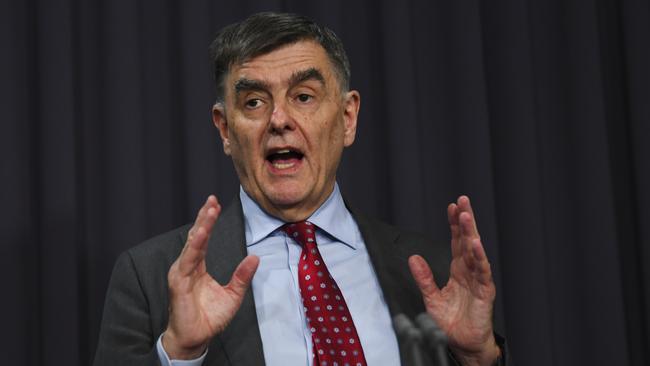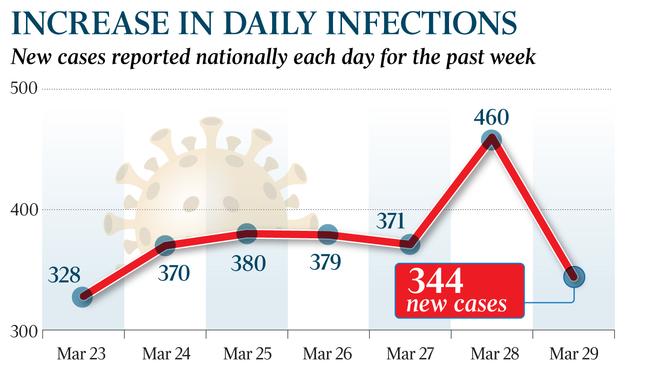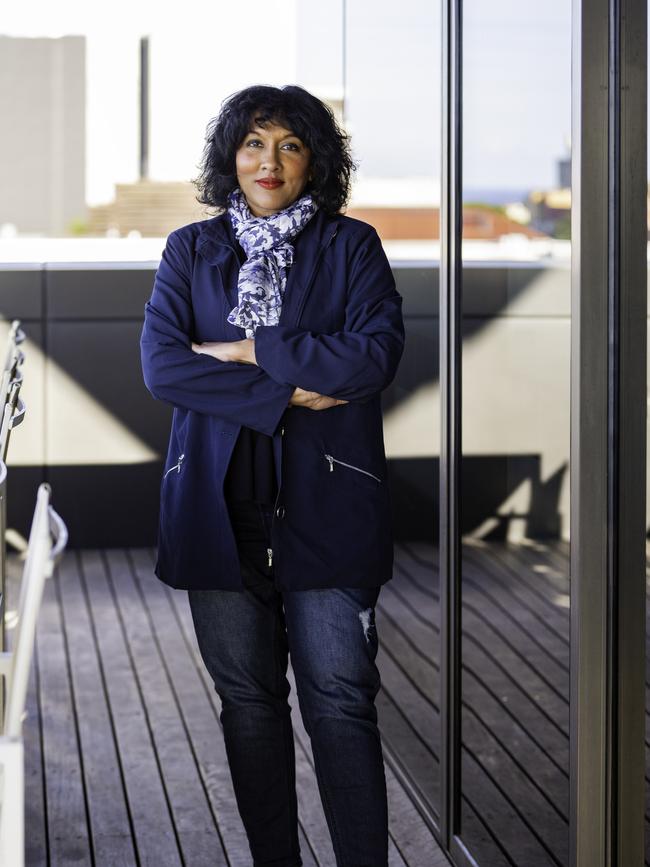Coronavirus: CMO Brendan Murphy says first signs of ‘flattening curve’ cause for optimism
Chief Medical Officer Brendan Murphy is optimistic Australia has started ‘flattening the curve’ of the coronavirus outbreak.

The Chief Medical Officer is optimistic Australia has started “flattening the curve” of the coronavirus outbreak but health authorities remain concerned mistakes such as the Ruby Princess cruise disembarkation could mean there are still undetected chains of transmission in the community.
It comes as Prime Minister Scott Morrison said the national daily rate of increase in cases had been at 25-30 per cent last week, but had fallen to about nine per cent on Sunday.
Chief Medical Officer Brendan Murphy said on Sunday night Australia’s health challenge was not proving to be similar to other countries hit with a fast spreading of the virus. “We are not Italy, we are not the United States, we are not Spain,” Professor Murphy said.
“We have one of the highest rates of testing per head of population in the world and one of the lowest positive test rates so we think, unlike countries unfortunately like Italy, Iran and even the US, that when they detected significant outbreaks they probably had much, much larger outbreaks in the community that were undetected.

Professor Murphy said health authorities were “reasonably confident” that Australia was detecting a significant majority of infections.
“We have had a somewhat slowing of the growth in the epidemiology curve, but it is not enough. We have to slow it further,’’ he said.
Health Minister Greg Hunt said there were “early signs of flattening the curve”, which was a “positive sign”.
“We have to slow it further and we have to stop the thing that’s worrying us most, which is community transmission,’’ Mr Hunt said. “That is transmission without known links to a known case.
“Those things do worry us because if you have outbreaks in the community, they can be much harder to detect, and so we’ve broadened the testing criteria in those areas to make sure that we can detect and bring it under control.”
Such concerns led the national cabinet to announce a stricter two-person limit for public gatherings on Sunday.

Raina MacIntyre, professor of global biosecurity at the University of NSW, said the interventions Australia had already taken were working but that there could be yet undetected transmissions between asymptomatic people in the community.
“It’s clear the travel ban and social-distancing interventions we have put in place are working to flatten the curve,” Professor MacIntyre said.
“But I am particularly concerned about the Ruby Princess episode because we know that ship had infection, there were a lot of people who went undetected, so we need to keep a close eye on that.”
She said it was not feasible for every Australian to be tested regardless of their symptoms, but that the testing should soon be expanded to non-symptomatic people in high-risk categories like close contacts of positive cases, to increase our chances of tracing community transmissions.
Data collated by the Centre for Evidence-Based Medicine at Oxford University suggests

Australia’s fatality rate is at the low end internationally, but Professor MacIntyre warned that
the fatalities usually occurred a few weeks later than a spike in cases.
“What will really increase deaths is if we run out of ICU beds, so while there’s evidence our measures are working, we still need to keep the burden off our health system as much as possible,” Professor MacIntyre said.
With 13 deaths by last Friday morning from a total of almost 3000 cases, Australia had a case fatality rate of 0.44 per cent.
The CFR in Italy on March 26 was 10.09 per cent, in Iran 7.60 and in Spain 7.38. Case fatality rates are skewed upwards since the testing bias is towards those who are prime candidates for infection. The CEBM study says the CFR was higher in China earlier in the virus but three months on has now reduced to 0.7 per cent. The study also found that countries that had recorded deaths with coronavirus rather than from coronavirus had inflated the case fatality rate.
Peter Collignon, an infectious diseases physician and microbiologist at the Canberra Hospital, said while it was “early days”, there was evidence to suggest the number of Australian cases would not continue to grow exponentially like in Italy and the US.
“It’s a little too early to tell but there’s certainly some hope and optimism that we will flatten the curve,” Professor Collignon said.
“I would like to hope we are going to do more than flatten the curve but instead make it go down.”
He said the most important curve to pay attention to was the “epidemic curve”, which is the number of new cases found each day. “I’m expecting that number will continue to go up for a little while longer with all the returning Australians from overseas, but as they are quarantined for two weeks that will really limit the ability for other people to get it.
“As I look at the figures, I think there is a little bit of optimism there, and that will be more evident a week from now as travellers are forced to quarantine properly.”



To join the conversation, please log in. Don't have an account? Register
Join the conversation, you are commenting as Logout